St Oswald's Home for Girls, Cullercoats, Whitley Bay, Northumberland
In 1891, the Waifs and Strays Society relocated its Netherton Home for Girls to new premises at Mast Lane (later renamed Marden Avenue), Cullercoats, near Whitley Bay. The building, a former boys' school known as St Oswald's College, could accommodate 40 girls aged from 8 to 14. The home, which adopted the St Oswald's name, was formally opened on December 8th, 1891, by the wife of the Bishop of Newcastle, Frances Wilberforce, who had been instrumental in founding the establishment at its original location in Newcastle. The Bishop then conducted a service of dedication.
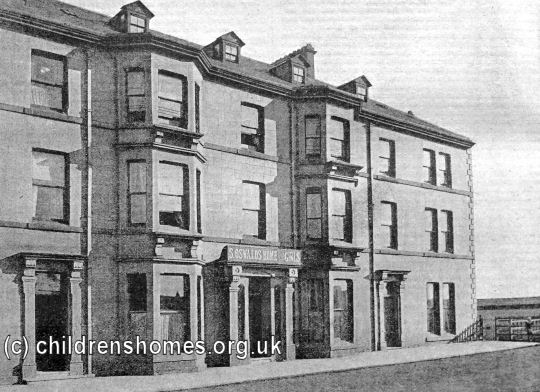
St Oswald's Home for Girls, Cullercoats, c.1892. © Peter Higginbotham
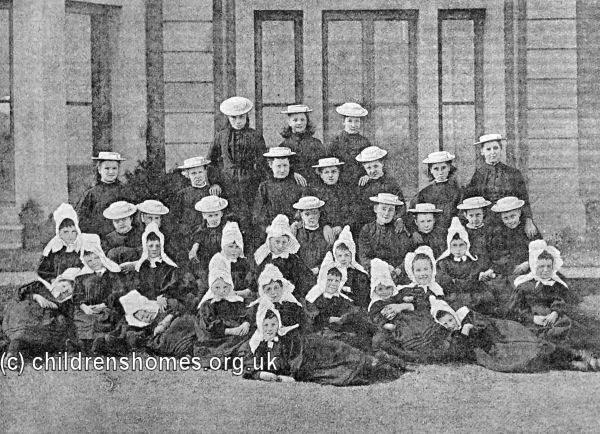
St Oswald's Home for Girls, Cullercoats, c.1892. © Peter Higginbotham
An account of the daily routine at the home was recorded by a visitor in 1892.
At 6 a.m. a bell rings to awaken the household, by the kitchen matron, who is downstairs a quarter of an hour before. Each one is expected to rise at once; and true enough, in the room over where I slept, the little feet could be heard without a moment's delay on the floor above, and evidently the dressing was going on with all speed.
The young children, I was afterwards informed, were then each given a bath by an elder girl, under the supervision of one of the matrons; the "house girls" went off to their work, and the "laundry girls" to theirs; and all this was so quietly and gently performed that, if I had not been listening, I should not have heard the least sound. The "house girls," and those employed in the laundry, have a warm bath twice a week in the evening, after the day's work is done.
At 7.30 a.m. the bell sounds again, and the large family of thirty-eight to forty girls, ranging in age from 4 to 16 years, begin to assemble in the large dining-room for breakfast. The girls are all seated round one long table, and are now eagerly eating their porridge and bread and milk. The lady superintendent and sewing matron are seated at a table, raised on a dais a little above the children, and there is a table in the corner, round which the smallest children are grouped, with an elder girl in charge. As the children filed into the room, there was a general morning salutation, and the gentle curtsey dropped. None could doubt that the lady superintendent was loved and respected, and that she was a mother among them all. The under-matrons seemed to look up to her as the guide and director of the Home, and it could be seen that they would seek her constantly as a private friend and counsellor. All her plans, though very simple in their character, were orderly, methodical, and regular, and each member of family seemed to be learning to take a pleasure in fulfilling wishes, and doing all in their power to prove that the confidence placed in them was not misjudged.
After breakfast all proceeded to the little chapel in the house where matins was sung, the children all taking part in a very bright intelligent manner, and their voices blending in earnest joyous praise in the two hymns they sang.
Matins lasted about twenty minutes, and then, led in line by the matrons, each set of girls passed to the work allotted to them, and the little ones to the day school.
Presently the lady superintendent joined me, as listening to the active preparations being made on all sides and she said, as she referred to the chapel services, that two of the girls whom she named, had saved their pennies for two months to have the joy of presenting the flowers for the chapel on Ascension Day, and that each girl in the Home had, unasked, contributed towards the flowers for Easter Day.
At 12.15 the school children return; one of the elder girls sees to their all being neat and tidy for dinner, and the bell is again sounded at 12.30.
The meals are taken in silence by the children (except by the urgent request from a visitor, or on any special occasion), for all must quickly return to their work; and yet, for ten minutes, immediately the dinner is over, the children are again in the chapel, sing one of their hymns, kneel together for two or three collects to be offered up, and, in conclusion, the petition is heard —
"Defend, 0 Lord, these Thy children, with Thy heavenly grace, that they may continue Thine for ever; and daily increase in Thy Holy Spirit more and more, until they come to Thy Heavenly Kingdom";
and then once again they all kneel together, and in hushed and gentle accents, sing the hymn.
Soon again the little feet are pattering off to school (where they will be to 4.30), and the elder girls to their work.
When the children return from school, they are taken for a walk on the sea-shore, and all return for tea at 6 o'clock, which is followed by shortened evensong.
The little ones of the household then at once retire to bed, and the elder ones to some form of recreation, and then, by 9.30 p.m., the busy beehive is closed, and the peaceful sleep of those who have known real work and earnest toil has passed upon them all.
Before too long, it was recognised that the building was not large enough for the increasing size of its household. Accordingly, the Society's architect, Mr Stanley Peach, was commissioned to design a new home to be erected on a site adjacent to the existing premises, which had been given by the Duke of Northumberland. The foundation stone for the new building was laid on October 29th, 1895, by Mrs John Henry Burn, the wife of the donor of £2,000 towards the construction costs, estimated at £5,600. The official opening and dedication of the completed home was carried out on November 11th, 1896, by the Bishop of Newcastle. The old boys' school building was subsequently converted in the Beverley Hotel as shown on the 1919 map below.
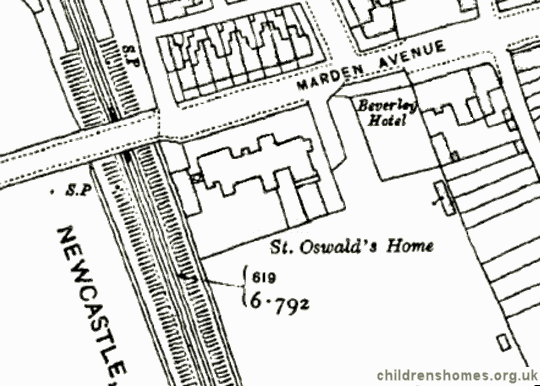
St Oswald's Home for Girls site, Cullercoats, c.1919.
The new home was described as a 'plain, but substantial' building which could accommodate 50 girls. The ground floor incorporated a dining room, kitchens, playroom, workroom, matron's sitting room, chapel and prayer room. The upper floors contained the children's dormitories, each linked to a matron's room. There were also a few spare rooms for girls returning when out of service.
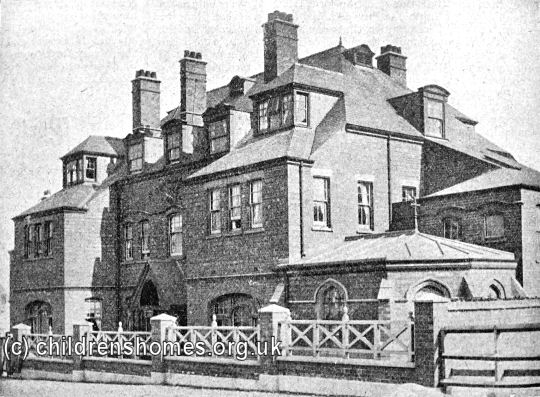
St Oswald's Home for Girls from the west, Cullercoats, c.1900. © Peter Higginbotham
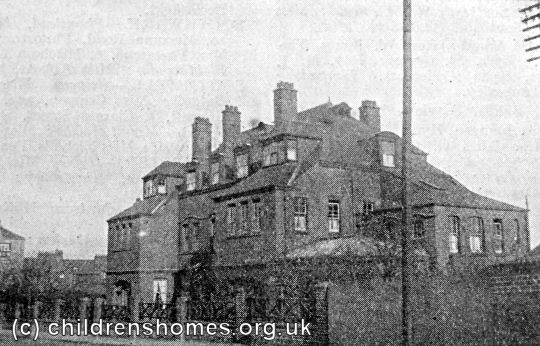
St Oswald's Home for Girls from the west, Cullercoats, c.1924. © Peter Higginbotham
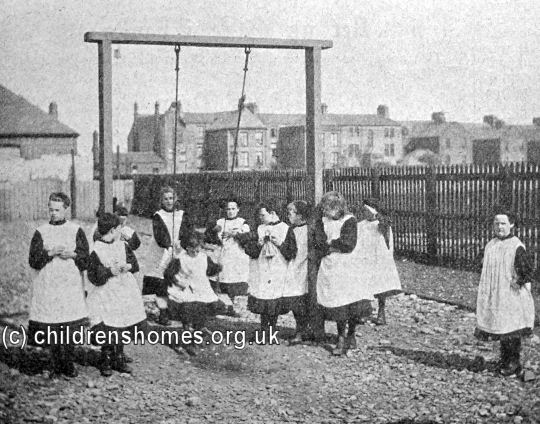
St Oswald's Home for Girls, Cullercoats, c.1900. © Peter Higginbotham
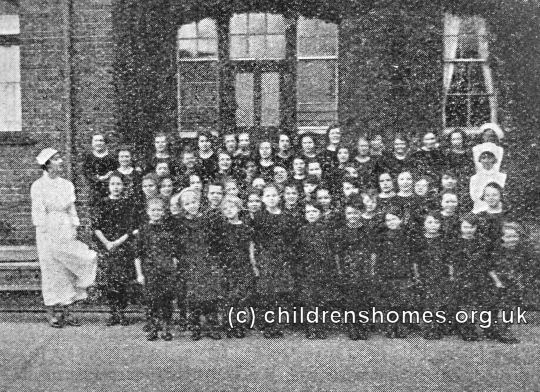
St Oswald's Home for Girls, Cullercoats, c.1926. © Peter Higginbotham
The usual destination of the girls was domestic service. In preparation for this, they received training in skills such as housework and kitchen work, and also contributed to the household work of the home.
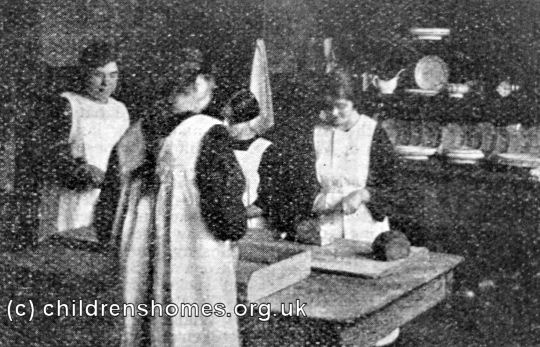
Kitchen at St Oswald's Home for Girls, Cullercoats, c.1926. © Peter Higginbotham
Laundry work was another important part of the girls' training. The home had its own laundry and took in washing from the local district, generating a useful contribution towards its running costs.
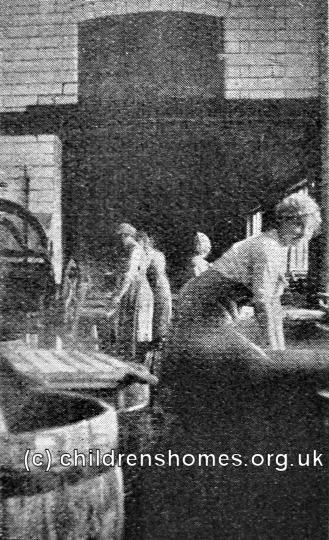
Laundry at St Oswald's Home for Girls, Cullercoats, c.1924. © Peter Higginbotham
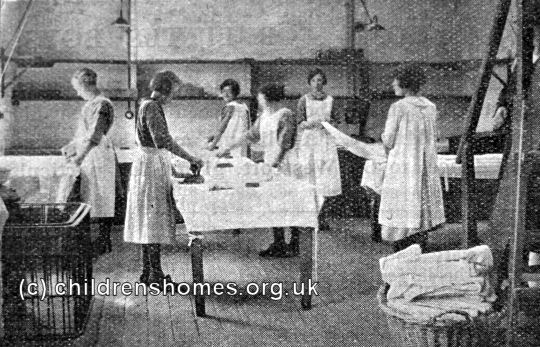
Laundry at St Oswald's Home for Girls, Cullercoats, c.1929. © Peter Higginbotham
Needlework was another important skill. The girls mended their own clothes when needed.
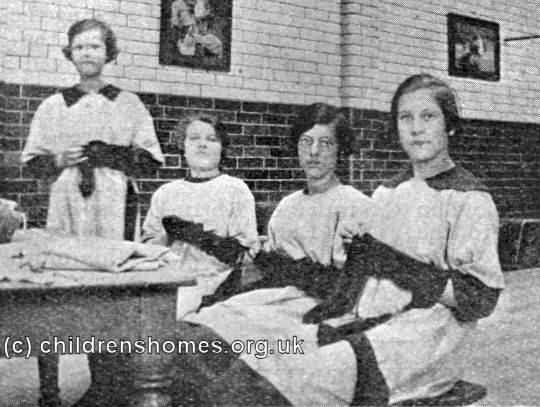
Mending stockings at St Oswald's Home for Girls, Cullercoats, c.1927. © Peter Higginbotham
When work was finished, the playroom offered dome time for recreation.
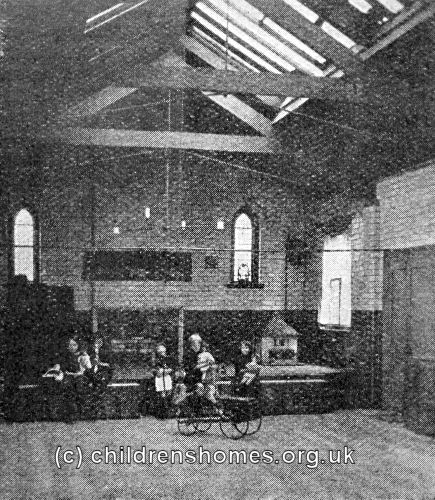
St Oswald's Home for Girls, Cullercoats, c.1928. © Peter Higginbotham
At the outbreak of the Second World War in 1939, the girls were evacuated to Natland, near Kendal. After the war, they were transferred to the Princes Risborough home.
The St Oswald's building was later used as a YMCA/YWCA hostel and club for many years but had now been replaced by modern flats. The Beverley Hotel building no longer exists.
Records
Note: many repositories impose a closure period of up to 100 years for records identifying individuals. Before travelling a long distance, always check that the records you want to consult will be available.
- Index of the Society's first 30,000 children's case files ordered by surname.
- Index of the Society's first 30,000 children's case files ordered by date of birth.
- The Children's Society Records and Archive Centre is at Unit 25, Springfield House, 5 Tyssen Street, London E8 2LZ (email: archives@childrenssociety.org.uk). Files for children admitted to its homes after September 1926 were microfilmed in the 1980s and the originals destroyed. Some post-1926 files had already been damaged or destroyed during a flood. The Society's Post-Adoption and Care Service provides access to records, information, advice, birth record counselling, tracing and intermediary service for people who were in care or adopted through the Society.
- The Society has produced detailed catalogues of its records relating to disabled children, and of records relating to the Children's Union (a fundraising body mostly supported from the contributions of children).
Bibliography
- Bowder, Bill Children First: a photo-history of England's children in need (1980, Mowbray)
- Church of England Waifs and Strays' Society [Rudolfe, Edward de Montjoie] The First Forty Years: a chronicle of the Church of England Waifs and Strays' Society 1881-1920 (1922, Church of England Waifs and Strays' Society / S.P.C.K.)
- Higginbotham, Peter Children's Homes: A History of Institutional Care for Britain's Young (2017, Pen & Sword)
- Morris, Lester The Violets Are Mine: Tales of an Unwanted Orphan (2011, Xlibris Corporation) — memoir of a boy growing up in several of the Society's homes (Princes Risborough, Ashdon, Hunstanton, Leicester) in the 1940s and 50s.
- Rudolf, Mildred de Montjoie Everybody's Children: the story of the Church of England Children's Society 1921-1948 (1950, OUP)
- Stroud, John Thirteen Penny Stamps: the story of the Church of England Children's Society (Waifs and Strays) from 1881 to the 1970s (1971, Hodder and Stoughton)
Links
- Hidden Lives Revealed — the story of the children who were in the care of The Children's Society in late Victorian and early 20th Century Britain.
- The Children's Society
Except where indicated, this page () © Peter Higginbotham. Contents may not be reproduced without permission.


